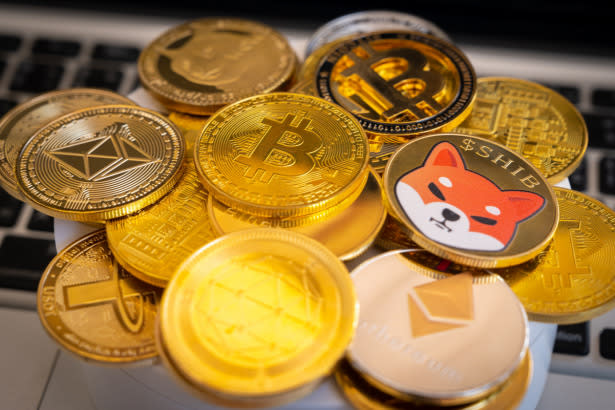Cryptocurrency


What Is The Graph (GRT)?
The Graph (GRT) is a decentralized protocol that enables the indexing and querying of blockchain data in a trust-minimized manner. It acts as an indexing protocol for querying data from blockchains, allowing developers to efficiently access blockchain data without having to run their own nodes.
Here is some detailed information about The Graph (GRT):
1. Core Functionality: The Graph allows developers to build and publish open APIs, called subgraphs, that applications can query to retrieve blockchain data. These subgraphs can be used to index and query data from various blockchains, including Ethereum, IPFS, and PoA.
2. Decentralized Network: The Graph operates as a decentralized network of nodes that index and serve data from various blockchains. This decentralized approach ensures that data is accessible in a trust-minimized manner, without relying on centralized servers.
3. Token Economics: The Graph has its native utility token, GRT, which is used to incentivize network participants to index and serve data. Node operators, called Indexers, can earn GRT by indexing data and serving queries, while consumers pay GRT to access the indexed data.
4. Use Cases: The Graph is widely used in decentralized applications (dApps) to efficiently access blockchain data. It is particularly useful for applications that require real-time data updates, complex queries, or historical data analysis.
5. Community and Development: The Graph has a vibrant community of developers, node operators, and users who contribute to the protocol’s development and adoption. The protocol is open-source, allowing anyone to contribute to its codebase and ecosystem.
6. Partnerships: The Graph has established partnerships with various blockchain projects, dApps, and development tools to expand its ecosystem and improve data accessibility for decentralized applications.
Overall, The Graph plays a crucial role in the decentralized ecosystem by providing a reliable and efficient way to access blockchain data. Its decentralized approach, token economics, and community-driven development make it a valuable tool for developers building on blockchain platforms.
The Graph (GRT) was founded by a team of experienced blockchain developers and entrepreneurs.
The core team behind The Graph includes:
1. Yaniv Tal: Yaniv Tal is the co-founder and project lead of The Graph. He has a background in software engineering and has been involved in the blockchain space for several years. Yaniv has played a key role in shaping the vision and development of The Graph protocol.
2. Brandon Ramirez: Brandon Ramirez is another co-founder of The Graph and serves as the research lead. He has a strong technical background and has contributed to various aspects of the protocol’s design and development.
3. Jannis Pohlmann: Jannis Pohlmann is also a co-founder of The Graph and leads the engineering efforts. He has expertise in building scalable and efficient systems, which has been instrumental in developing the protocol’s infrastructure.
4. Olivia Saa: Olivia Saa is a co-founder of The Graph and leads ecosystem growth and community engagement. She has been actively involved in building partnerships, developer relations, and fostering The Graph’s vibrant community.
These founders, along with the broader team of developers, advisors, and community members, have been instrumental in driving the development and adoption of The Graph protocol. Their combined expertise in blockchain technology, software development, and community building has helped establish The Graph as a leading indexing protocol in the decentralized ecosystem.
The Graph (GRT) stands out in the blockchain space due to several unique features and characteristics that set it apart from other projects.
Here are some key aspects that make The Graph unique:
1. Decentralized Indexing Protocol: The Graph is a decentralized indexing protocol that allows developers to efficiently query blockchain data without relying on centralized servers. This decentralized approach ensures data integrity, censorship resistance, and trust minimization.
2. Subgraph Architecture: The Graph’s subgraph architecture enables developers to create and publish open APIs that define how specific blockchain data is indexed and queried. This modular design allows for easy customization and scalability, making it a flexible solution for various use cases.
3. Efficient Data Querying: The Graph’s indexing and querying mechanisms are designed for efficiency and speed, enabling developers to access real-time and historical blockchain data quickly. This is crucial for decentralized applications that require up-to-date information from the blockchain.
4. Incentive Mechanisms: The Graph uses a token-based incentive mechanism to reward network participants for indexing and serving data. This incentivizes node operators (Indexers) to contribute their resources to the network, ensuring the availability and reliability of indexed data.
5. Wide Blockchain Support: The Graph supports indexing data from multiple blockchains, including Ethereum, IPFS, and PoA. This multi-chain approach allows developers to access data from different blockchain networks through a unified interface, enhancing interoperability and flexibility.
6. Community-Driven Development: The Graph has a vibrant and active community of developers, node operators, and users who contribute to the protocol’s development and growth. This community-driven approach fosters collaboration, innovation, and adoption within The Graph ecosystem.
7. Scalability and Reliability: The Graph is designed to be highly scalable and reliable, capable of handling a large volume of data queries and updates. Its decentralized architecture ensures that the network can scale horizontally as more participants join and contribute to the indexing process.
8. Open-Source and Transparency: The Graph is open-source, allowing anyone to inspect, contribute to, and build upon its codebase. This transparency promotes trust and accountability within the community, ensuring that the protocol remains secure and resilient.
Overall, The Graph’s unique combination of decentralized architecture, efficient data querying, incentive mechanisms, wide blockchain support, community-driven development, scalability, and transparency make it a valuable tool for developers looking to access blockchain data in a reliable and trust-minimized manner.
The Graph (GRT) has a maximum total supply of 10 billion tokens. The initial circulating supply at the time of the token launch was around 1.2 billion GRT. However, the circulating supply of GRT tokens can change over time due to various factors such as token releases, token burns, staking rewards, and token distribution events.
Here is some detailed information about The Graph (GRT) token supply:
1. Total Supply: The maximum total supply of GRT tokens is set at 10 billion. This means that once all the tokens are minted, there will be a total of 10 billion GRT tokens in existence.
2. Initial Circulating Supply: The initial circulating supply of GRT tokens was around 1.2 billion at the time of the token launch. These tokens were made available for trading on various cryptocurrency exchanges.
3. Token Distribution: The distribution of GRT tokens includes allocations for various purposes such as community incentives, protocol development, ecosystem growth, and team vesting. These allocations are designed to support the long-term development and sustainability of The Graph ecosystem.
4. Token Releases and Vesting: GRT tokens allocated for team members, advisors, and early investors may be subject to vesting schedules, where the tokens are released gradually over a specified period. This helps align the interests of token holders with the project’s long-term success.
5. Token Burns: The Graph protocol may implement token burns, where a certain amount of GRT tokens are permanently removed from circulation. Token burns can help reduce the total supply of tokens, potentially increasing the value of the remaining tokens.
6. Staking Rewards: GRT token holders can participate in the protocol by staking their tokens and earning rewards for contributing to the network’s security and performance. Staking rewards can influence the circulating supply of GRT tokens as more tokens are staked and locked up in the network.
It’s important to check the latest information from official sources or reputable cryptocurrency data providers to get the most up-to-date details on The Graph’s circulating supply and token distribution.
The Graph (GRT) network is secured through a combination of decentralized consensus mechanisms, economic incentives, and cryptographic protocols.
Here is detailed information on how The Graph network is secured:
1. Decentralized Network: The Graph operates as a decentralized network of nodes that index and query blockchain data. This decentralized structure ensures that no single entity has control over the network, enhancing security and resilience against attacks.
2. Proof of Stake (PoS): The Graph network uses a Proof of Stake (PoS) consensus mechanism to secure the protocol and validate transactions. Node operators, known as Indexers, stake GRT tokens to participate in the network and earn rewards for indexing and serving data.
3. Slashing Mechanism: The Graph implements a slashing mechanism to deter malicious behavior by penalizing nodes that act against the network’s interests. Indexers can have their staked tokens slashed if they perform actions that harm the network’s integrity.
4. Economic Incentives: The Graph incentivizes network participants to contribute their resources and maintain the network’s security through economic rewards. Indexers earn GRT tokens for indexing data and serving queries, while Delegators can stake their tokens with Indexers to earn a share of the rewards.
5. Protocol Security: The Graph protocol is designed with security in mind, implementing best practices in cryptography and data handling. The protocol undergoes regular security audits to identify and address potential vulnerabilities that could compromise the network’s integrity.
6. Community Governance: The Graph protocol is governed by its community of stakeholders, who can participate in governance decisions through on-chain voting. This decentralized governance model ensures that network upgrades and changes are decided collectively by the community, enhancing transparency and security.
7. Continuous Monitoring: The Graph network is continuously monitored for any anomalies or suspicious activities that could indicate a security threat. Node operators and community members collaborate to detect and respond to potential security incidents promptly.
8. Resilience and Redundancy: The decentralized nature of The Graph network provides resilience and redundancy against single points of failure or targeted attacks. Even if some nodes go offline or are compromised, the network can continue to operate and serve data efficiently.
Overall, The Graph network is secured through a combination of decentralized consensus, economic incentives, protocol security measures, community governance, and continuous monitoring. These security mechanisms work together to ensure the integrity, reliability, and trustworthiness of the network for developers and users accessing blockchain data through The Graph protocol.
Start trading with 100,000 USD on your demo account without risking real money. Gain experience with your dedicated investment advisor. When you are ready, take your first step into the world’s largest market!
WhatsApp us
